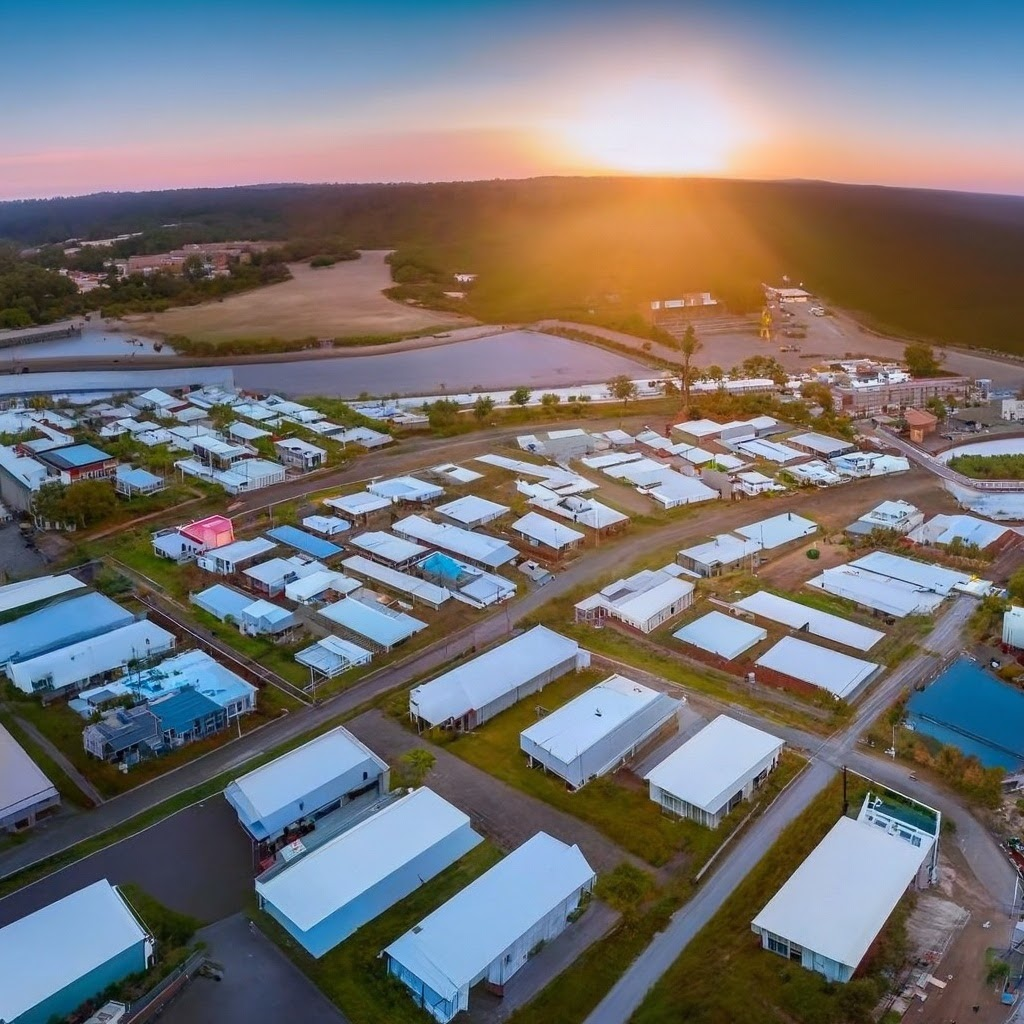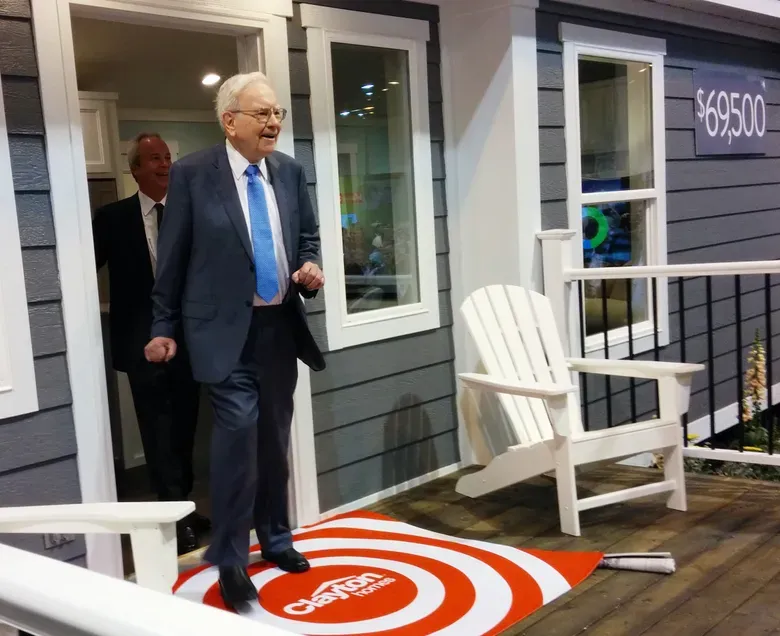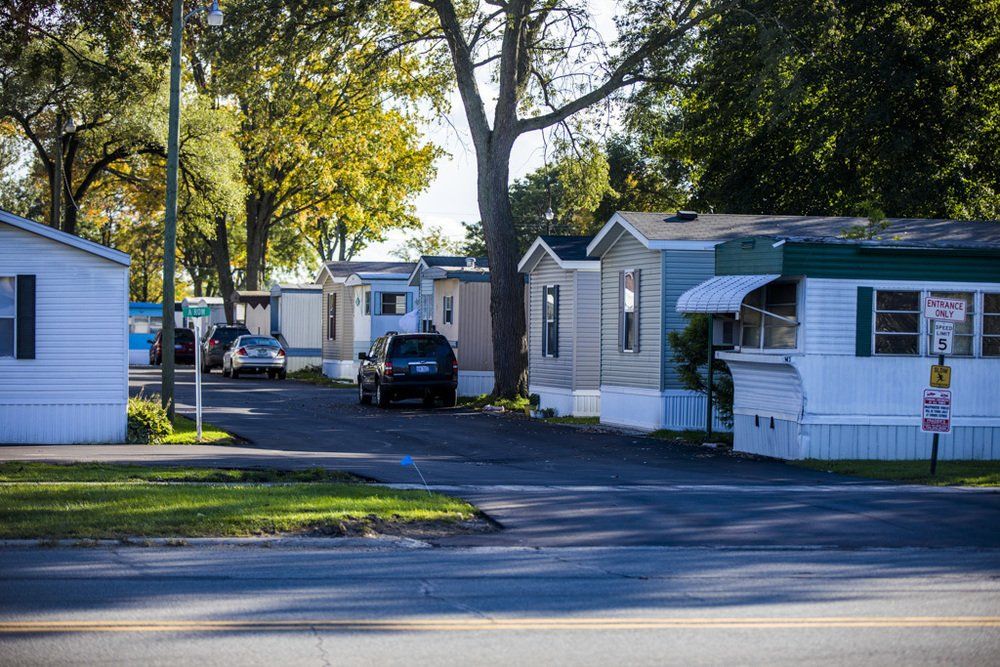Blog
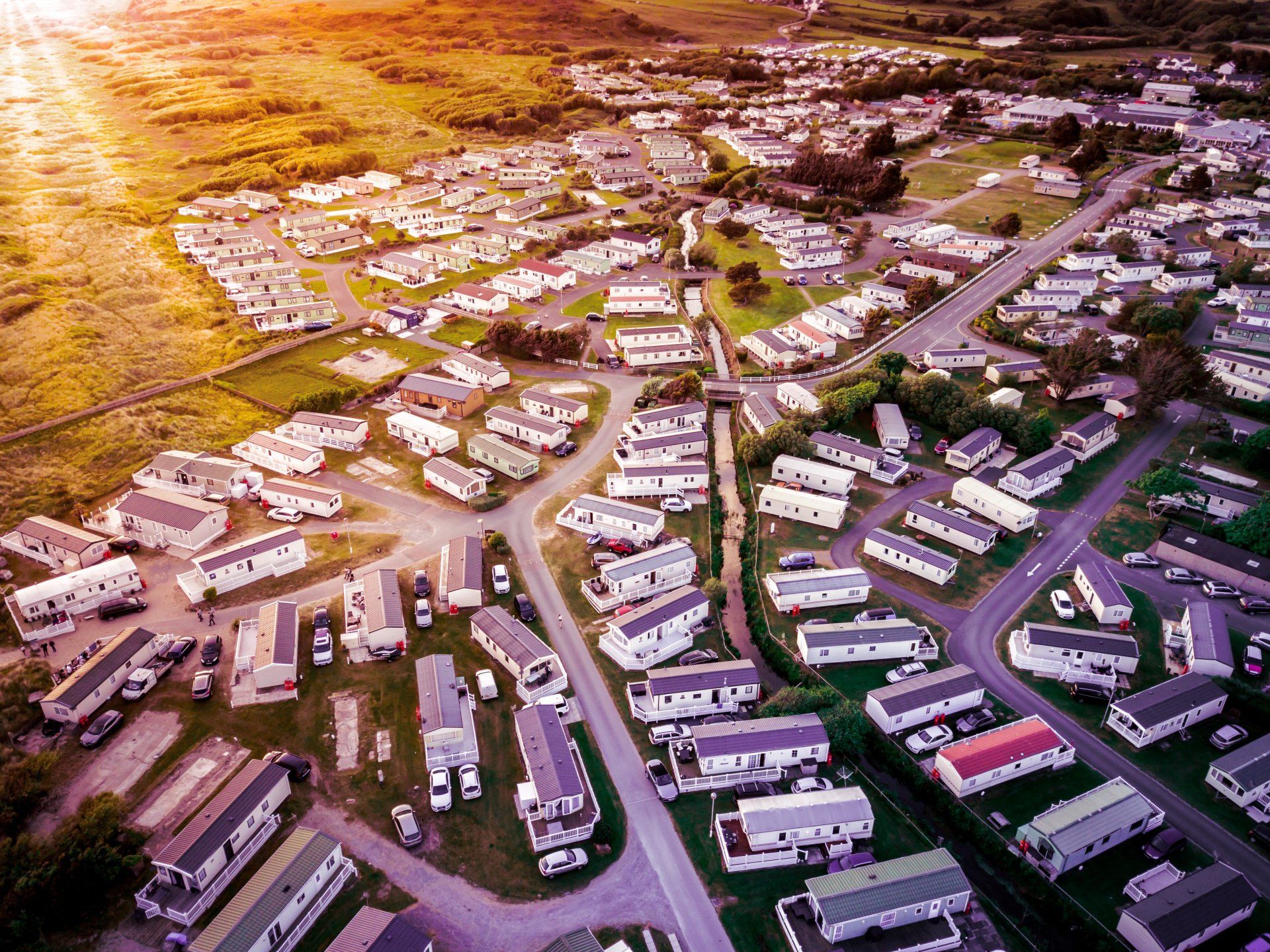
In this two-part series, LoopNet is providing an overview of the mobile, or manufactured, home community sector — one of the least understood and most intriguing real estate asset classes. Part one focused on the history and evolution of the asset class and considered the opportunities that exist for small private investors. Part two, presented below, centers around key investment criteria, relative strengths and challenges and approaches to responsible ownership. When we left off at the end of part one of this series, Frank Rolfe, a private investor who is one of the largest owners of mobile home communities in the United States and the co-founder of Mobile Home University, was about to detail his key investment criteria for mobile home communities. So, without further ado: Investment Criteria for Mobile Home Communities Rolfe noted that the first mobile home community he purchased, in 1996, taught him what to avoid in communities going forward. Based on that experience, he delineated the five most critical items that he believes investors, particularly those new to the sector, need to consider: Infrastructure: Rolfe says that good infrastructure is paramount. He cautions against private septic or wastewater systems and wells, in particular, and he encourages investors to seek out communities with municipal water and municipal sewer access. Similarly, he is generally opposed to master-metered gas or electric systems, which essentially require a mobile home community owner to become a private utility. Managing mobile home communities’ energy use is particularly challenging given that modern manufactured homes utilize considerably more power than the older homes did, which can put a strain on existing systems and lead to costly repairs and upgrades Density: According to Rolfe, the ideal density for a mobile home community is about seven units per acre. That enables the operator to put the largest possible double-wide or single-wide home on every lot. Some older communities have densities between 10 and 15 homes per acre, which is not ideal, but workable. However, some communities exceed 20 homes per acre. At that density, it won’t be possible to replace outdated, vacant units with modern homes, as they will be too large. In addition, you could run afoul of the local fire marshal. Technically, they require a 10-foot separation between homes for safety, and they possess the authority to shut down the community if the density doesn’t allow for that distance. Location: As with any real estate investment, location is a pivotal consideration when evaluating a mobile home community. Rolfe prefers to focus on communities that are either in upscale suburban locations — mostly populated with detached homes, in well-regarded school districts and featuring vibrant retail amenities — or in urban settings that are experiencing a renaissance and undergoing gentrification. He suggests that investors should avoid rural locations, or suburban locations that aren't in good school districts. Age of the homes: Rolfe believes it is important for investors to consider the age of the existing homes in the community. Homes that were built prior to 1976, i.e. pre-HUD, are less than 14-feet wide, which makes them rather claustrophobic; they also lack modern amenities, such as washers and dryers. Accordingly, if a lot renter vacates one of these homes, it will need to be replaced, rather than repaired and renovated. If the park has a preponderance of pre-1976 units, this could create significant expenses for an investor in the future. On the other hand, Rolfe was quick to point out that you don’t want all of the homes in the community to be brand new, either. Brand new homes are, most likely, still being paid for, which means there’s a greater risk of the occupant defaulting on their mortgage, which would leave the community owner with an empty lot, or even mortgage payments, depending on how the loan was underwritten. Rolfe believes that the ideal scenario is a community populated by relatively modern homes that are already paid for. Economics: Rolfe suggests that the cap rate on the community should be roughly three points higher than the interest rate on the investor’s loan, assuming 70%-80% leverage. According to Rolfe, this spread will usually enable an investor to garner a cash-on-cash return of approximately 20%. On more desirable properties, Rolfe noted that you may need to factor potential upside from rent increases into your model in order to reach the recommended cap rate threshold. While Rolfe’s criteria may serve as a framework for investors, it’s worth noting that other sources adhere to somewhat differing investment principles. For instance, Mike Conlon, CEO of Affordable Communities Group, said that, like Rolfe, he initially avoided mobile home communities that lacked access to public utilities, but he eventually revised that position, “because everything’s fixable.” Conlon went on to say that location is his primary concern when evaluating a mobile home community. “I’m always going to buy a park that’s within 20 minutes of a major metro. And the reason I do that is my belief [that] all multifamily, whether apartments or mobile home parks, is about jobs.” Nonetheless, he acknowledged that there are opportunities for investors in mobile home communities located in smaller, more tertiary markets. In those instances, Conlon suggested that it’s important for the investor to have firsthand knowledge of the local market and be comfortable with the area’s long-term employment prospects. Entering into a situation where a single employer — a local factory, for instance — is responsible for the majority of the jobs in the area could be precarious. In general, Conlon’s view of the overall market was a bit more cautious than Rolfe’s. “It’s a tough market right now and there’s obviously a lot of advantages … with mobile home parks, but the prices are way higher than they used to be. It feels a lot to me like ’07, where even mobile home parks in Florida got way too [expensive] and people made mistakes.” Nonetheless, everyone in the industry that LoopNet spoke with, Conlon included, remained largely, if guardedly, optimistic about the future prospects of the sector. If anything, as Conlon observed, the industry seems poised for growth. “New homes that we’ve brought in are all sold out for three months. We don’t even have them on the ground yet, and we have deposits; people who are downsizing [from conventional houses] are coming to us to buy these new homes,” he said. Michael Nissley, executive managing director and national director of the Manufactured Housing & RV Group at Colliers International, put it even more succinctly: “I’m very bullish on the mobile home park industry.” Harker Heights, TX (Frank Rolfe) The Advantages of Investing in a Mobile Home Community In articulating the relative advantages of investing in mobile home communities compared to other real estate assets, Rolfe referenced Warren Buffet’s moat analogy, in which a moat represents the circumstances that protect your investment. “We’re the moat kings. We’re like a castle where there’s a moat, and there’s another moat behind that moat and then another moat,” Rolfe said. More specifically, based on LoopNet’s reporting, we identified five primary advantages to investing in mobile home communities: limited maintenance and personnel costs; decreased turnover; the unlikely benefits of a bad reputation; significant upside potential; and a contrarian attitude. Limited Maintenance Expenses and Responsibilities Conlon began his foray into the real estate industry by investing in multifamily apartment complexes. Within a few years, he had acquired approximately 500 units, but he struggled to grow his business beyond that threshold, largely because of the maintenance-intensive nature of traditional multifamily assets. In 2005, he purchased his first mobile home community, and a year later he sold the apartment complexes and plunged headlong into investing in mobile home communities, which he says are simply “a lot easier to manage.” To illustrate the minimized maintenance burden, Conlon told LoopNet that, of the 43 communities that he owns, only four of them feature a full-time maintenance employee. “In apartments, anything over 60 [units] required a full-time, certified [air conditioning technician], and those guys were tough to maintain and hold, so that was a big issue for us. We didn’t want to be beholden to those people, so the mobile home park makes it much easier from that perspective,” Conlon said. Rolfe concurred with Conlon’s perspective. “It is just land rental … You don’t have to get involved in the homes, you don’t have to fix toilets and things. The stuff that people hate about [maintaining] apartments, we don’t have to [deal with], because we just rent land.” Less Turnover One of the most significant costs that owners of traditional multifamily complexes contend with is turnover. “By nature, apartments are more transitory, and they have anywhere between 40% and 50% turnover on an annual basis,” Conlon said. Conversely, Conlon told LoopNet that the annual turnover in his mobile home communities is approximately 15%. “Mobile home parks tend to be [populated by] more long-term residents. The resident typically owns their home, so … they’re sort of invested in the property and they tend to stay longer. And you can develop a community that way,” Conlon said. Norm Sangalang, a Senior Vice President with the CBRE National Manufactured Housing & RV Resorts (MHRV) Specialty Practice, concurred with Conlon. “At a stabilized occupancy level, the continuity of [mobile home community] occupancy is highly consistent and very durable.” The relatively low level of turnover directly impacts an investor’s returns. As Conlon remarked, “Turnover costs you money, because you have to change the unit, fix up things, whatever; the lower the turnover, the better.” When a Bad Reputation Is a Good Thing Investors in mobile home communities need to possess a certain boldness; a willingness to venture where other investors might fear to tread, and that’s part of what makes the sector potentially rewarding. As Rolfe put it, “The U.S. media has such an entrenched stereotype they have built about how terrible trailer parks are that most people won’t even look at investing in them.” This bad reputation has also significantly constrained new development in the sector, which decreases the potential for unexpected competition. In fact, Nissley noted that many municipalities have even attempted to reduce the number of existing communities. He estimated that Miami-Dade County was home to as many as 500 mobile home communities at one point; today, he approximated that less than 75 of those communities remain. While Nissley acknowledged that some of those communities were destroyed by hurricanes, he believes that many were the victims of municipal agendas. That phenomenon is not limited to Miami-Dade County either. According to Rolfe, “Supposedly, there’s about 10 [mobile home communities] built per year, and there’s about 100 torn down [in the United States], so we’re actually an endangered species.” Significant Upside Potential Lot rents at mobile home communities have trailed inflation by a considerable margin over the last 50-60 years. “The average lot rent in America is believed to be about $280 per month, and the average lot rent in 1960 was $500 a month in today’s dollars,” Rolfe said. That creates potential upside for investors. There’s also the potential for long-term development opportunities in some regions. Nissley commented that some investors approach mobile home communities as a land investment, with the added benefit of an existing income stream. “Some people view mobile home parks as a land bank, and there’s a few investors in this business that just look at it that way. And their analysis [involves] a bit more than just the going-in cash flow and how can they improve the cash flow. They’re looking at the broader market; they’re looking at land prices; they’re looking at likely zoning for that particular area, and land use and density.” Market Resilience While LoopNet is hesitant to label any asset class as recession-proof, mobile home communities might almost warrant such a designation (emphasis on “almost”). “During good times and bad … manufactured housing seems to be weathering the storm very, very well,” Nissley remarked. In fact, according to Rolfe, the industry verges on contrarian, and can often perform better during intervals when the broader economy is experiencing economic distress. “Our sales pick up when people are doing poorly and they need more affordable housing,” Rolfe said. Nissley went on to say that the sector’s stability is a feature it shares with multifamily and single-family homes — it fulfills a fundamental need. “Being primary housing, where someone lives, from a default perspective, you’re probably going to get rid of your boat, your car, possibly your office, before you get rid of your house.” Nissley continued, “From that perspective, affordable housing is probably among the safer places to be in this market.” Nissley further observed that the CMBS data from recent market corrections supports this thesis, with mobile home communities and multifamily complexes outperforming other asset types. The Disadvantages of Investing in a Mobile Home Community The preceding benefits notwithstanding, mobile home communities, like any investment, come with their share of risks and challenges. Based on LoopNet’s reporting, the most notable potential issues that investors should be prepared for are the cost of replacing homes, skeptical (at best) municipalities, sketchy record-keeping practices and a degree of culture shock. The Burdens of Home Replacement According to Nissley, the most significant change in the mobile home industry over the last 20 years, from a community owner’s perspective, is the manner in which new homes are brought into the community. In the event that there is an existing empty lot, or a vacancy develops, the capital expense of purchasing new mobile homes or refurbishing existing units has often shifted from the lot renter to the owner of the community. “The number one thing that requires additional capital to this industry and that changed the business model was the need for an owner/operator of parks to fill [lots] or rehab the homes in the parks themselves, with their own balance sheet.” While initiatives such as 21 Mortgage’s CASH program (discussed in part one of this series) endeavor to minimize this burden, they still require the owner/operator of the community to advertise the home and show it to potential purchasers. Further, in the event that the homeowner defaults on their mortgage, the owner of the community becomes responsible for the mortgage payments and upkeep of the home until they can secure a new purchaser. Sangalang noted that the lack of robust financing options for mobile homes fosters this paradigm. “The purchase of individual manufactured homes has a much smaller pool of lenders, which is a proportionally much smaller percentage of the overall housing market. The scale of traditional housing loans provides a broader and more competitive lending market that leads to higher efficiency,” he said. While Conlon sees a value-add opportunity — i.e., the ability to increase cash flow through improvements — in bringing new homes into a community (as outlined in part one), Nissley notes that investors need to proceed carefully. “The liability of maintenance and repair of a park-owned home can sometimes exceed your revenue, if you’re not careful.” Uncooperative Municipalities Mobile home communities are often subject to challenges from their local municipalities. Accordingly, Nissley says that it’s critical for prospective investors to grasp the zoning regulations and general attitude towards mobile home communities in the municipality where they are investing. In particular, Nissley says that investors will need to understand the difference between mobile home communities that are conforming and those that are nonconforming. Conforming means that the property is legally zoned and currently operating as a mobile home community. However, over time, particularly in urban areas, some mobile home communities have had their land use or zoning changed by the municipality. This is because, possibly due to urban sprawl, the municipality no longer believes a mobile home community is appropriate for that area. Even if a park is technically zoned appropriately, or at least was at one time, it is considered legally nonconforming if the zoning or land use changes. While the existing homes are grandfathered for their current use, a community owner could be restricted from making any changes to the community, such as adding amenities or moving in new homes. Rolfe suggests that the real issue that local governments have with mobile home communities isn’t necessarily the product type, but the lack of tax revenue that mobile home communities generate compared to other uses, such as office, retail or single-family housing. Regardless of the reasoning, Rolfe says that investors must ensure that their certificate of zoning and all required permits are in order to avoid any municipal complications. Increased Research and Due Diligence While the lack of consolidation in the mobile home community sector can create opportunities for investors, it also presents challenges. Finding communities to purchase can require some digging. And, even once a potential community is identified, investors shouldn’t expect that all of the records will be straightforward, or even available. Because many smaller, or so-called “mom and pop,” owners don’t have any debt on the properties, they aren’t required to produce reports or keep computerized records. Even rent rolls could be hard to come by. “It’s not uncommon to ask the seller, ‘can I see your financials’… and it’s basically a spiral notebook with numbers written in purple crayon,” said Rolfe. “Sometimes I’ll take over a park, I’m buying one right now on the west side of Charlotte, where there aren’t any records, there’s no leases, everything was sort of done in cash … that’s the type of thing you’re going to run into occasionally,” Conlon said. Such obstacles are by no means insurmountable, but they do require particularly astute due diligence on the part of the investor. Culture Shock It’s a delicate issue, but it would be disingenuous not to acknowledge that mobile home communities are different than most other real estate asset classes that a typical investor may consider. As Rolfe pithily noted, “The average American never goes into a mobile home park.” Nissley observed that mobile home community ownership, more often than not, “comes with hardship.” Rolfe went on to say, “It is a strange industry, and it takes a while to get used to it. There’s some degree of culture shock for anyone entering the industry, myself included. Unlike most other real estate sectors where you feel like you kind of, sort of, understand it, unless you’ve lived in a mobile home park, you don’t.” Conlon cautioned that, “You need to understand that it’s a group of people that’s pretty much been kicked to the curb their whole life, and they can be sensitive about certain issues, especially rent raises.” Or, to frame it from another perspective: mobile home community ownership comes with a unique set of responsibilities that a prospective investor should be aware of. La Costa Mobile Home & RV Park, Lovejoy, GA (Mike Conlon) The Tenets of Responsible Mobile Home Community Ownership The responsibilities of a mobile home community owner will vary depending on the particular community. Some communities are completely NNN, with pass-throughs for every expense, up to and including real estate taxes; while other communities are full-service, with the owner/operator involved in every facet of the community, including ownership of the homes themselves. In most instances, though — assuming the community owner has no responsibility for the actual mobile homes, and they are just collecting lot rent — Rolfe indicated that the following items typically represent the core areas of responsibility for a mobile home community owner: Providing an uninterrupted flow of utilities, including water, sewer, electric, cable television, internet, etc. Maintenance of roads Providing sufficient ambient lighting throughout the community A well-maintained entry and signage Enforcement of community rules and zero tolerance for the breaking of laws Annual permit renewal (in some states) Snow removal throughout common areas, including entrance/exit (if applicable) General common area maintenance It’s worth noting that Rolfe is a somewhat controversial figure within the industry, with a penchant for sometimes speaking indelicately about the sector and its customer base. However, in LoopNet’s interactions with him, Rolfe, as well as Conlon, emphasized the unique responsibility mobile home community owners assume. “If we are anything, we are a solution, not a problem, because we are the only folks providing actual affordable housing in the U.S. … we are the only nonsubsidized affordable housing that exists,” Rolfe said. Conlon said that he has developed a playbook for when he acquires distressed communities that is focused on creating a sense of camaraderie at the properties. This typically comprises removing any tenants whose behavior is detrimental to the community; repairing or replacing aged homes; and installing new amenities, including soccer fields, playgrounds, etc. Rolfe echoed these notions, “We put in a lot of picnic tables, a lot of grills, a lot of playgrounds. We took old, abandoned facilities in parks … brought them back to life, made them into community centers. We had a park in Iowa where we put in a library with computers.” Conlon reduced his basic philosophy to a single sentence, “Keep reinvesting in your community; that’s the number one thing you have to do.” Rolfe felt similarly, saying, “As long as you go in with a positive attitude that, ‘as long as I’m in the business, my goal will be to profit from making things the best they can be,’ that’s a winning strategy, because then everyone’s happy with the end product. The residents, the city, the future buyer, the banker, the appraiser — that’s the only way you can get universal happiness.”
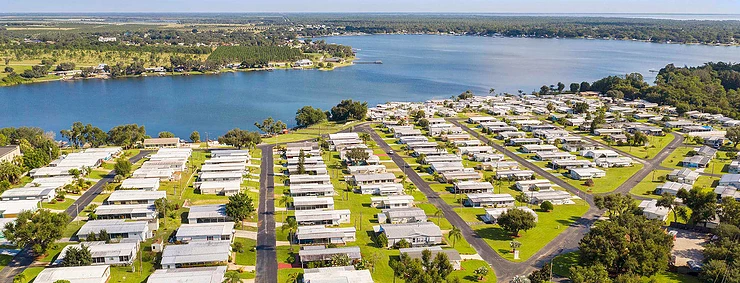
Blackstone Group aims to grow its manufactured housing portfolio by acquiring about 40 parks for $550 million, in a major vote of confidence for one of the most resilient commercial property sectors. The New York-based firm, considered to be the world’s largest commercial landlord, is in exclusive talks to purchase the properties from Summit Communities, according to a Bloomberg account citing people familiar with the matter. Blackstone would acquire the assets through its longer-hold, income-oriented vehicle Blackstone Real Estate Income Trust (BREIT). Most of the 40 parks are located in Florida. Sun Communities Inc., a real estate investment trust, also bid on the portfolio, according to the report. Blackstone’s prospective deal is not yet final and may fail to materialize. A source confirmed to Commercial Property Executive that the deal is in the works and added that the properties will be operated by Treehouse Communities, a top operator with dozens of manufactured housing communities across six states, primarily in the Sunbelt. Blackstone plans to spend tens of millions of dollars upgrading the housing stock and enhancing the common area amenities, such as pools and clubhouses. NICHE ASSET HEATS UP The deal would significantly expand Blackstone’s footprint in the manufactured housing space. The alternative asset manager, which has a real estate portfolio valued at $329 billion, is said to have paid roughly $200 million to pick up seven parks from Legacy Communities earlier this year. Most of the parks are located in Florida and Arizona. In 2018, Blackstone snapped up 14 manufactured housing communities in Arizona and California from Canada-based Tricon Capital Group for $172 million. Even including the new deal with Summit Communities, however, the firm would own less than 1 percent of the existing manufacturing housing stock across the U.S. With the pandemic aggravating the affordable housing crisis, manufactured housing communities have proven to be both a viable housing alternative and a relatively safe and stable investment option. JLL reported that $821 million worth of manufactured homes traded during the second quarter, up 23 percent compared to the first quarter, even as deal volume slumped across other property sectors.
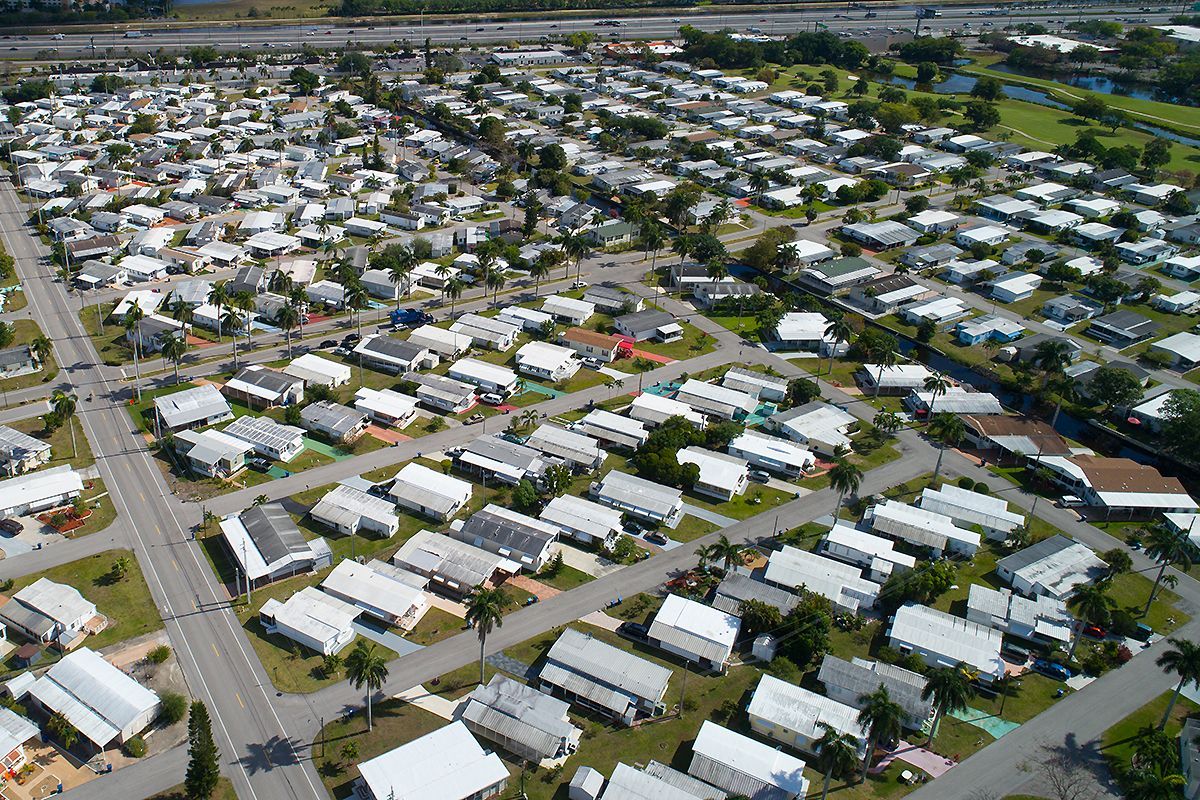
You're about to discover what every beginner should know about investing in mobile home parks (MHPs) or now more commonly referred to as Manufactured Housing Communities (MHCs). You'll learn the 2 types of deals, the 4 key demand factors and why you should invest in mobile home parks. You'll also find out the top 3 misconceptions about this commercial property type, 5 major things to look out for before you invest, 3 big pitfalls to steer clear of, how and where to find the best deals and the 3 most common ways to finance your first mobile home park. MHPs often fly under the commercial investing radar but they can be terrific investment opportunities for individual investors like us. Here is mobile home park investing for beginners: PART 1: 2 Types of and 5 Figures that Demonstrate Demand for Mobile Home Parks Land Only Land and Mobile Homes 8.6 Million Mobile Homes in the United States 50,000 Mobile Home Parks 60 Million People Earn $20,000 per Year $1,000 per month is the average rent for an apartment in the United States 8% of United States Population live in Mobile Home Parks PART 2: Why Invest in and 3 Misconceptions of Mobile Home Parks Growing Demand for Affordable Housing Stable and Predictable Limited Competition for New Parks Potentially Higher Returns Misconception # 1 - Crazy Lazy People live in Mobile Home Parks Misconception # 2 - Mobile Homes can pull out at anytime Misconception # 3 - You can't get loans on Mobile Home Parks PART 3: 5 Tips on What to Look For and 3 BIG No-Nos Increasing Population Areas Stay Away from 5 Star Parks Seek Out Mom and Pop Owned Parks Minimum 10% Cap Rate Best deals allow for easy rent increases and cost reduction options abound. No-No # 1 - Hurricane Zones No-No # 2 - Park Owned Homes No-No # 3 - Operating Permit Status Issues PART 4: How and Where to Find Mobile Home Park Deals LoopNet.com MHCIGroup.com CIMLS.com MobileHomeParkStore.com Multimarketbroker.com Direct Mail Campaign Of the deals you look at, 20% will be potentially good deals, 30% deals will be marginal deals, 50% will be over priced. PART 5: 3 Most Common Ways to Finance Your First Mobile Home Park Bank Financing Seller Financing Seller Financing with Note Assumption
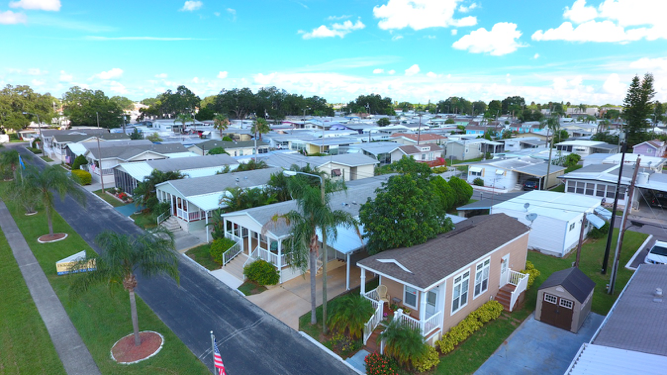
If you haven’t been paying attention, Mobile Home Parks are the single hottest asset class in the US. Because mobile homes are thought of as a hassle and an eyesore for city officials, no one is able to get a mobile home building permit any time soon. That fact combined with the increase in demand for affordable housing due to the economic downturn has created a perfect storm for mobile home parks. Not only has the increased demand and stagnant supply created a rare opportunity, the assets themselves are cash flow machines. As you probably assume, mobile home parks tend to be mismanaged by typical “mom and pop” owners who have owned the park for 40 years, rarely raised rents, and have let hidden expenses eat up their profits. As you may know, commercial real estate is sold based on a multiple of income called the “CAP Rate”. CAP Rate is an expected rate of return on a real estate investment property based on the Net Operating Income that the property will generate if purchased in all cash. Because commercial property values are based on income, if you are able to increase rents and decrease expenses, the value of your property increases exponentially. Let’s take a look at the numbers of a typical deal you could find in this industry… The lots are currently being rented for $250 each month, but the market rates are closer to $325. The property manager is making $60,000 each year, and the market shows the property manager should be making closer to $28,000. There is a mobile home park that contains 150 units and 100 of them are occupied (66.66% occupancy). Let’s say that mobile home parks in the area are selling at 10% CAPs, and you have $10,000 a month in expenses. $250 x 100 (lots) = $25,000 Monthly Gross Income – ($10,000 monthly expenses) = $15,000 Net Monthly Income x 12 months = $180,000 Net Annual income. $180,000 / 0.1 (10% CAP) = $1,800,000 Property Value So, let’s say you purchase this property at a 10% CAP for $1,800,000. The first day you own the property, you will fire the property manager making $60,000 per year and hire new one at $28,000 per year. Even though replacing a property manager won’t cost you anything, it will have an immediate effect on your property’s Net Operating Income. $60,000 – $28,000 = $32,000 increase in Annual Net Operating Income The next step will be to begin to raise the rents. Because you want to be conservative and not cause too much tenant turnover, you take 18 months to raise the lot rent from $250 to $325. +$75 per rented lot per month = $75 x 100 (lots) = $7,500 x 12 (months) = $90,000 increase in Annual Net Operating Income. $180,000 (previous Net Operating Income) + $32,000 (from decreasing management expenses) + $90,000 (from increasing rent) = $302,000 new Net Operating Income $302,000 /0.1 (10% CAP) = $3,020,000 New Property Value at a 10% CAP The property value has now gone from $1,800,000 to $3,020,000 in less than 18 months. Sound too good to be true? It isn’t. In fact, we didn’t even factor in what happens to the property value if you are able to get the vacancy rate from 33% down to 10-20%. (The numbers look even crazier!) The truth is, there are hedge funds, asset teams, families, and other individual investors just like you finding deals like this every day. Don’t miss out on this incredible opportunity to be involved in America’s #1 asset class.
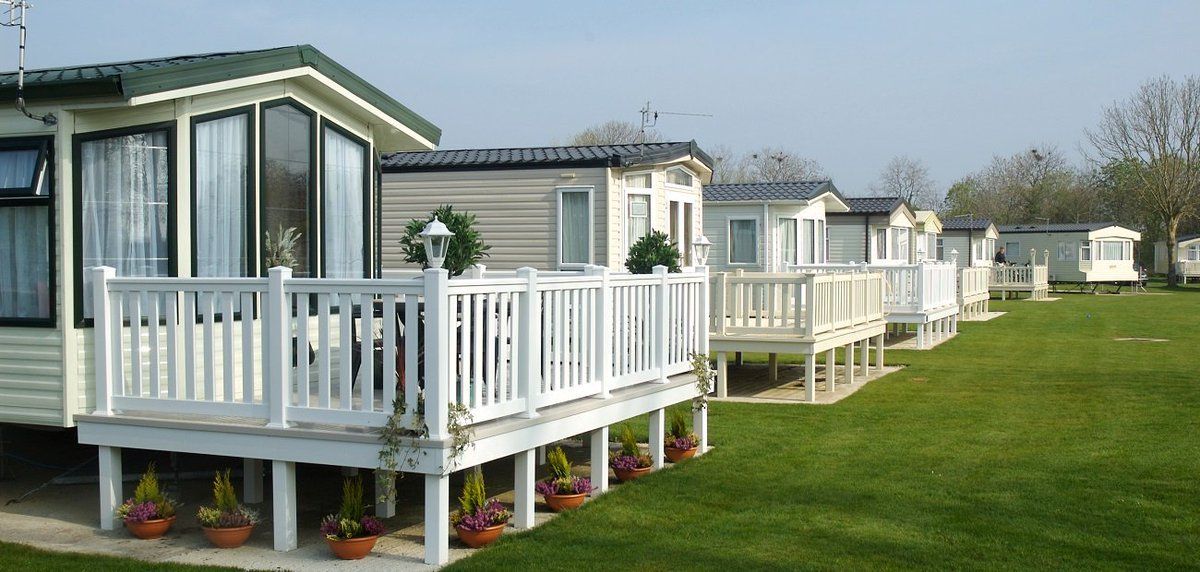
That’s the response I tend to get when I tell folks I’m looking to buy a mobile home park this year. And I totally get it. A couple years ago, I would have said the same thing. But times have changed, and so has my opinion on mobile home parks. You see, after the real estate crash nearly a decade ago, real estate investments were easy to make. Nearly every property was a good deal and great money could be made. But that was yesterday. Today- the real estate market is tough. Single family homes are being scooped up by homeowners attempting to get their next home before interest rates rise. New investors are learning about the power of real estate investing and buying up most “nasty houses” as well as the small multifamily deals. And hedge funds and large institutional investors are grabbing all the larger apartment complexes at prices that simply don’t make sense to savvy real estate investors. So real estate investors have a choice: they can sit out and wait for the next real estate crash or they can get creative and find opportunities in this current market. Of course, there is nothing wrong with sitting the next few years out, but I love the action too much to stop. So I’m opting for option two: finding opportunities. One such opportunity that has recently caught my attention is mobile home parks. And for clarification: no, I’m not talking about buying mobile homes. I’m talking about the entire park, where the residents own (or rent) homes and I lease out the land. So, why are mobile home parks one of the best investments left in America? Below are seven powerful benefits to mobile home park investing. 1. Lower Cost Per Unit When investing in large multifamily properties or single family homes the cost per unit is high. But mobile home parks allow a person to jump in and acquire more units for less money. According to Lanoie, “MHPs offer the lowest cost investment per unit of any real estate asset class with potentially higher risk adjusted returns”. Most park owners own the land, not the housing units themselves which means that the cost of the investment is typically going to be a lot less in comparison to the number of units owned. You can easily expect to pay $100,000+ per home or apartment unit versus paying as little as $10,000 per lot in a mobile home park. 2. Lower cost for repairs and maintenance One of the factors that makes me the most excited about mobile home parks is that I don’t have to work with contractors. To put it bluntly, I hate dealing with contractors. When you’re working on single family homes and multifamily properties, dealing with contractors is a daily hassle. However, by not owning the actual homes that your tenants live in, it means that the mobile home owner is responsible for the maintenance, repairs, and updates for their residence, not the landlord. While the mobile home park owner is still going to need to account for the expenses of the upkeep for the park, it will most likely be significantly less than what they would pay for the upkeep of the homes. 3. Spread Out Risk Because mobile home parks allow investment companies to acquire more units for each investor dollar (as discussed above), the risk for loss decreases. In other words: with more tenants, the risk is spread out more. For example, let’s say you own four single family houses, and one of the tenants forces you to evict them and you are left with $20,000 in expenses. Bummer. There goes five years of profit from your entire portfolio. While those kinds of situations are rare, they do happen. However, when you own a large collection of units, the high cost of those freak occurrences are spread out across your entire portfolio. 4. The Demand is High Due to numerous factors, the demand for mobile homes inside well-managed parks is ever increasing. According to Lanoie, new mobile home parks are not being developed due to government zoning, gentrification, and zoning changes. However, while home prices are climbing to historic levels, incomes for many Americans are not rising. The need for affordable housing is only getting stronger. Lastly, baby boomers on fixed incomes are retiring in record numbers creating a greater demand for affordable housing that will only continue to grow. “10,000 Baby Boomers retire each day with an average social security benefit of just $1,294 per month. 75% of retirees have less than $30,000 in their retirement accounts, and the bottom 50% have zero measurable savings.” More and more lower income Americans and retirees are looking to mobile homes as their chance of still being a homeowner. 5. Less Tenant Turnover As a landlord of numerous single family and multifamily properties, I know that one of the largest expenses for a property owner is tenant turnover. Cleaning their unit, needing to track down a new tenant, and the lack of income during the vacancy can take thousands of dollars per unit out of the investor’s pocket each year. But when a tenant owns their own home and simply leases the land turnover drops dramatically.“It can cost a tenant $5,000-$7,000 to move their home out of a park and thus 98% of mobile homes will remain in the same location after the second year. 75% of owners expect to stay in their Mobile Homes for 5 years or longer, and a large percentage expect to never sell.” This means that there is very little turnover and thus very little risk of losing tenants and going through the pain of finding new ones. When tenants choose to 'vacate their homes,' often the owner of the MHP may acquire a new asset that, with a few upgrades, can be sold to a new tenant. The penalty for moving also gives landlords increased leverage when it comes to raising lot rents. 6. “Mom and Pop” Owners Many mobile home parks are simple “mom and pop” operations. While investors and corporations are starting to catch on to this lucrative industry, most are still small time enterprises. This is great news for potential mobile home park investors for a couple reasons. One reason is that many of these owners are retired or will soon be entering retirement age and this makes them interested in cashing out of their business. So despite the fact that the demand is high, you can still currently find MHC owners who are interested in selling. Secondly, many of these owners are not professional landlords. Often times these owners face difficulties in bringing new homes and new tenants into their parks. They also may not have been exemplary with operational standards and income potential. This gives you the ability to buy the parks at a reasonable rate and then upgrade them and/or improve management, thus increasing the current tenant experience and attracting new, stable, long-term tenants. 7. Less Competition Mobile home park investing is the best kept secret in the real estate investment industry. This is great for investors who are looking for a great deal and don’t want to compete with the flood of new investors, homeowners, and institutional investors fighting for scraps with traditional real estate investments. What are the Downsides to Mobile Home Park Investing? As I've been venturing into this business, I've quickly discovered that mobile home parks are a different sort of animal from traditional multifamily investments. One of the constraints in the MHP sector is the small investor trying to invest directly without an established team or systems in place. Even with the emergence of the Internet as a tool for research and acquisition opportunities, the manufactured housing community sector remains highly fragmented and inherently localized by nature. So should you invest in mobile home parks? For me - the answer is an obvious and definite "yes." What about you?
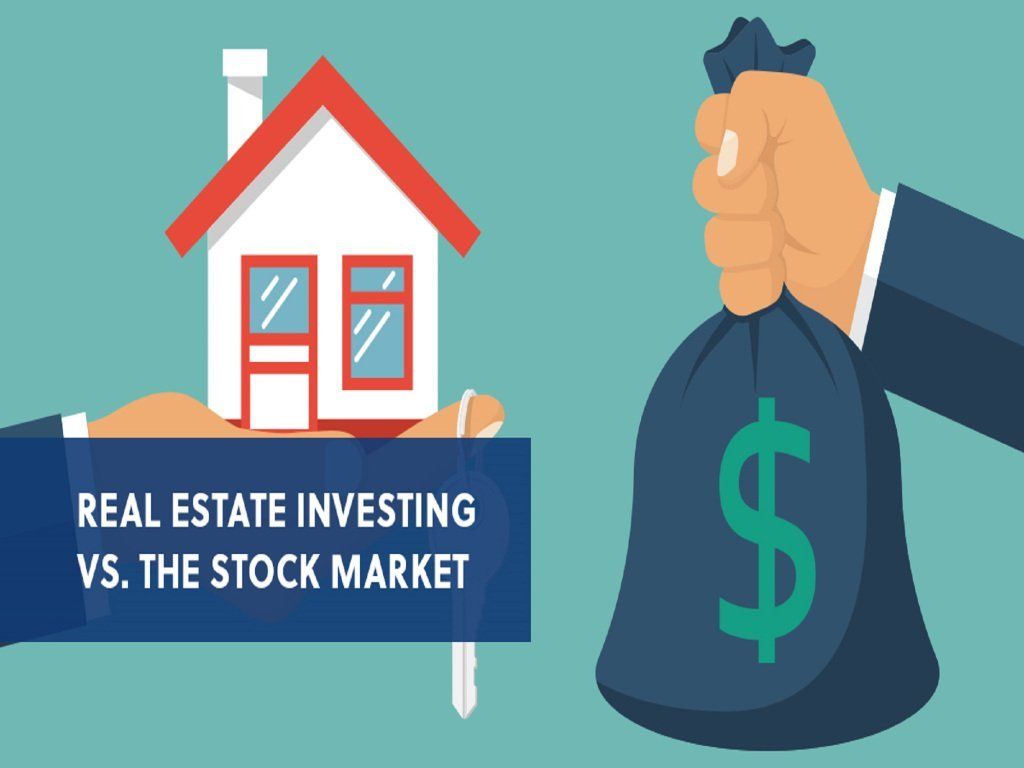
The SEC was formed in the aftermath of the stock market crash (Black Tuesday) that kicked off the Great Depression to protect the investing public and restore confidence in the market by providing investors with more reliable information and complete disclosures. So if the SEC is charged with protecting the investing public, why does it let companies sell a worthless stock? WALL STREET’S DIRTY LITTLE SECRET IS THAT AS LONG AS IT SLAPS A WARNING STICKER ON ITS STOCK, IT CAN SELL ANYTHING IT WANTS. Here’s the latest example: Last week Hertz filed with the SEC to sell $500 million of its common stock (the offering has since been withdrawn). In its filing, it included the following disclosures: Hertz said that equity holders won’t see a recovery unless those with higher priority, such as the company’s debtholders, are paid in full. And that, the company said, would only happen if there is an astounding change in the progress of COVID-19 and a significant turnaround in travel trends. Incredibly, Hertz warned potential buyers in its offering that it’s almost certain that the shares will become worthless. So why does the SEC permit companies like Hertz to sell a worthless stock? Because its disclosure rules permit companies to sell securities as long as they’re truthful. Hertz was truthful. They said that if you bought their stock, it was going to be worthless at some point. So why would investors buy worthless stock? Because nobody reads the prospectus. Many investors will never know about the nitty-gritty details of what they’re buying. Even as news of the stock sale was splashed across the Internet and Jim Cramer talked about it on CNBC, there were certainly going to be enough investors - who would never hear about the details or if they did hear about them would choose to ignore them - that would snap up all $500 million in shares. Most will see the low price and assume they’re buying at bargain prices. $500 million in worthless shares would have sold in one day. That’s because most mainstream investors don’t think long-term. They’re not thinking about when the stock becomes worthless. They’re hoping to flip it in a couple of days if the price jumps. That’s the problem with Wall Street and why it lacks integrity. Wall Street doesn’t think about any investor’s long-term financial health. All they care about is getting money in their coffers to keep the sham going today. Meanwhile, the SEC shrugs its shoulders. "Well, they warned you in the prospectus." Nobody reads a prospectus and that’s why worthless companies can and do sell a worthless stock. There are always going to be enough suckers to fill a capital need. And that is one of the biggest problems with Wall Street. The companies raising capital are a bunch of snake oil salesmen and the investing public is a bunch of speculators. That right there should tell you everything you need to know about Wall Street volatility. If nobody is investing for the long-term, investors will jump on and off the bandwagon at the drop of a hat. Before you know it, a specific stock will be worthless, or worse yet, the entire market will be down 30, 40, 50%. Why play in the Wall Street sandbox where there’s no integrity? WALL STREET DOESN’T CARE IF YOU MAKE MONEY OR NOT. IT JUST WANTS TO MOVE MONEY FROM YOUR POCKET TO THEIRS AND AS LONG AS THEY SLAP A WARNING STICKER ON IT, THE SEC WILL ALLOW IT. The SEC allowing companies to sell a worthless stock is like the FDA allowing pharmaceutical companies to sell death-inducing drugs as long as the appropriate warnings are on the label. Why not avoid all this and just invest in something where the company you’re trusting your capital with has your welfare in mind? Savvy investors prefer the private markets over public markets because most investors in the private markets invest for the long-term. Moreover, alternative cash flowing assets such as real estate have long lockup periods that prevent the type of runs that crash markets. Not only are private investments resistant to market volatility, but credible private investments will put the investor first and the managers will make themselves available to investors before they commit to giving them confidence in what they’re investing. The private markets are not like Wall Street where the investor is last in line. The right private investments will provide transparency and more importantly, put their money where their mouth is by taking care of the investor first by giving first dollar profits to the investors through preferred returns. Then when the preferred returns are satisfied, next dollar profits are split between the investors and the managers. Finally, when assets are liquidated, the investors are once again first in line when profits are first distributed to them until their capital accounts are zeroed out - in other words, when the investors have gotten all their investment capital back. Only then do the managers see any profits. Protect yourself against Wall Street’s lack of integrity. Rethink your investment strategy by considering the following: Seek out private alternative investments. Seek out experts in their alternative asset segment in specific geographic locations to maximize returns and achieve true diversification. Seek out private investment opportunities that put the investor first. Investing with intention,

